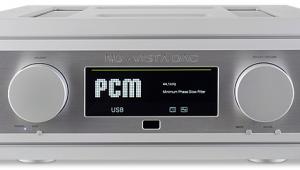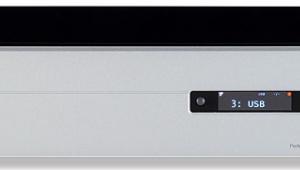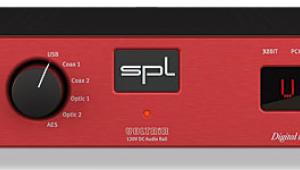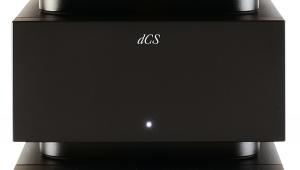North Star Usb Dac32 (£1500)

North Star Design is an Italian company but there is little evidence in the USB dac32 of the flamboyant design features that often distinguish that country’s audio products. There’s no gratuitous use of wood and no eye-catching metal sculpture. On the contrary, the USB dac32 is positively staid in appearance, albeit chunkily built and surprisingly heavy at 5kg.
Operationally it’s as simple as can be. Two rows of blue LEDs on the fascia indicate the selected input and sampling rate, the input being toggled in either direction via two buttons to the right. If no lock is achieved then the input LED flashes slowly and no sampling rate is identified.
Round the back, S/PDIF (coax and optical) and AES/EBU inputs are specified as supporting up to 24-bit/192kHz but the USB input – which requires you to load a driver from a supplied CD-ROM – is limited to 96kHz and the lab report suggests it has 16-bit rather than 24-bit resolution. Uniquely, an I2S input – something we’ve only occasionally seen on other digital products – is also provided for the connection of North Star’s own optical disc source, the CD-Transport Model 192 MkII. Fixed-level analogue output is either unbalanced via phono sockets or balanced via XLRs.
North Star recommends the use of Foobar as a Windows audio player. The USB input supports the kernel streaming plug-in (bypassing XP’s KMixer) and there is an app available that enables remote control from an iPod touch, etc.
LEAN AND CLEAN
The North Star’s stock-in-trade is a lean, high resolution sound that provides plenty of insight but on the one hand lacks the gorgeousness of the Electro’s performance and on the other can’t quite match the Benchmark’s bigness of sound and pizzazz. Compared with these two it sounds just a little undernourished, although it sees off the less precise sounding but costlier Antelope.
That said it’s a pretty close run thing between the North Star and Benchmark. Comparing them directly, on the Tippett the North Star didn’t quite imbue the cellos with the same forcefulness of bowing and, across the other side of the orchestra, the tuned percussion wasn’t quite so frenetic, so that the piece lost just a little of its vibrancy.
This slight diminution of impact was also apparent from the opening drum beats of ‘Well Well Well’. I couldn’t say that the North Star offered any less analysis of the various components but the overall result was not so weighty, not so rhythmically intoxicating. Essentially, the Benchmark made you want to dance more!
Impact isn’t an issue with the gentle Kodály pieces and here the choice was more difficult to make. The North Star perhaps shaded it on delicacy but via the Benchmark the cello was bigger-boned and the playing more impassioned.
Originally published in the August 2011 issue


























































